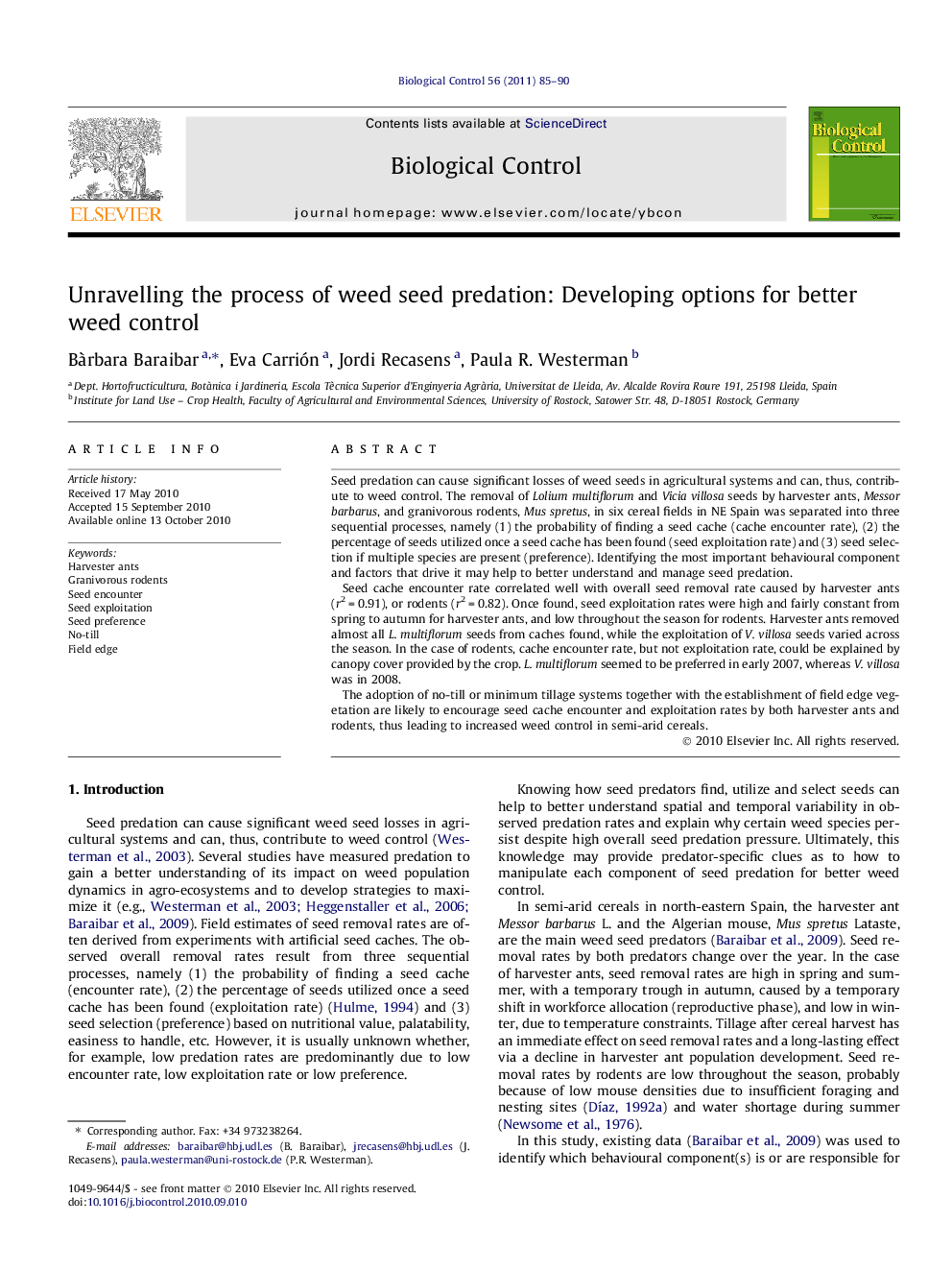| Article ID | Journal | Published Year | Pages | File Type |
|---|---|---|---|---|
| 4504409 | Biological Control | 2011 | 6 Pages |
Seed predation can cause significant losses of weed seeds in agricultural systems and can, thus, contribute to weed control. The removal of Lolium multiflorum and Vicia villosa seeds by harvester ants, Messor barbarus, and granivorous rodents, Mus spretus, in six cereal fields in NE Spain was separated into three sequential processes, namely (1) the probability of finding a seed cache (cache encounter rate), (2) the percentage of seeds utilized once a seed cache has been found (seed exploitation rate) and (3) seed selection if multiple species are present (preference). Identifying the most important behavioural component and factors that drive it may help to better understand and manage seed predation.Seed cache encounter rate correlated well with overall seed removal rate caused by harvester ants (r2 = 0.91), or rodents (r2 = 0.82). Once found, seed exploitation rates were high and fairly constant from spring to autumn for harvester ants, and low throughout the season for rodents. Harvester ants removed almost all L. multiflorum seeds from caches found, while the exploitation of V. villosa seeds varied across the season. In the case of rodents, cache encounter rate, but not exploitation rate, could be explained by canopy cover provided by the crop. L. multiflorum seemed to be preferred in early 2007, whereas V. villosa was in 2008.The adoption of no-till or minimum tillage systems together with the establishment of field edge vegetation are likely to encourage seed cache encounter and exploitation rates by both harvester ants and rodents, thus leading to increased weed control in semi-arid cereals.
Graphical abstractFigure optionsDownload full-size imageDownload as PowerPoint slideResearch highlights► Seed removal rates are mainly determined by seed cache encounter rates. ► Seed cache encounter rate by harvester ants is limited by nest density and distribution, and soil moisture and temperature. ► Seed cache encounter rate by granivorous rodents is limited by population size and crop cover. ► Natural weed control could be enhanced by no-till, field-edge vegetations and larger populations of seed predators.
